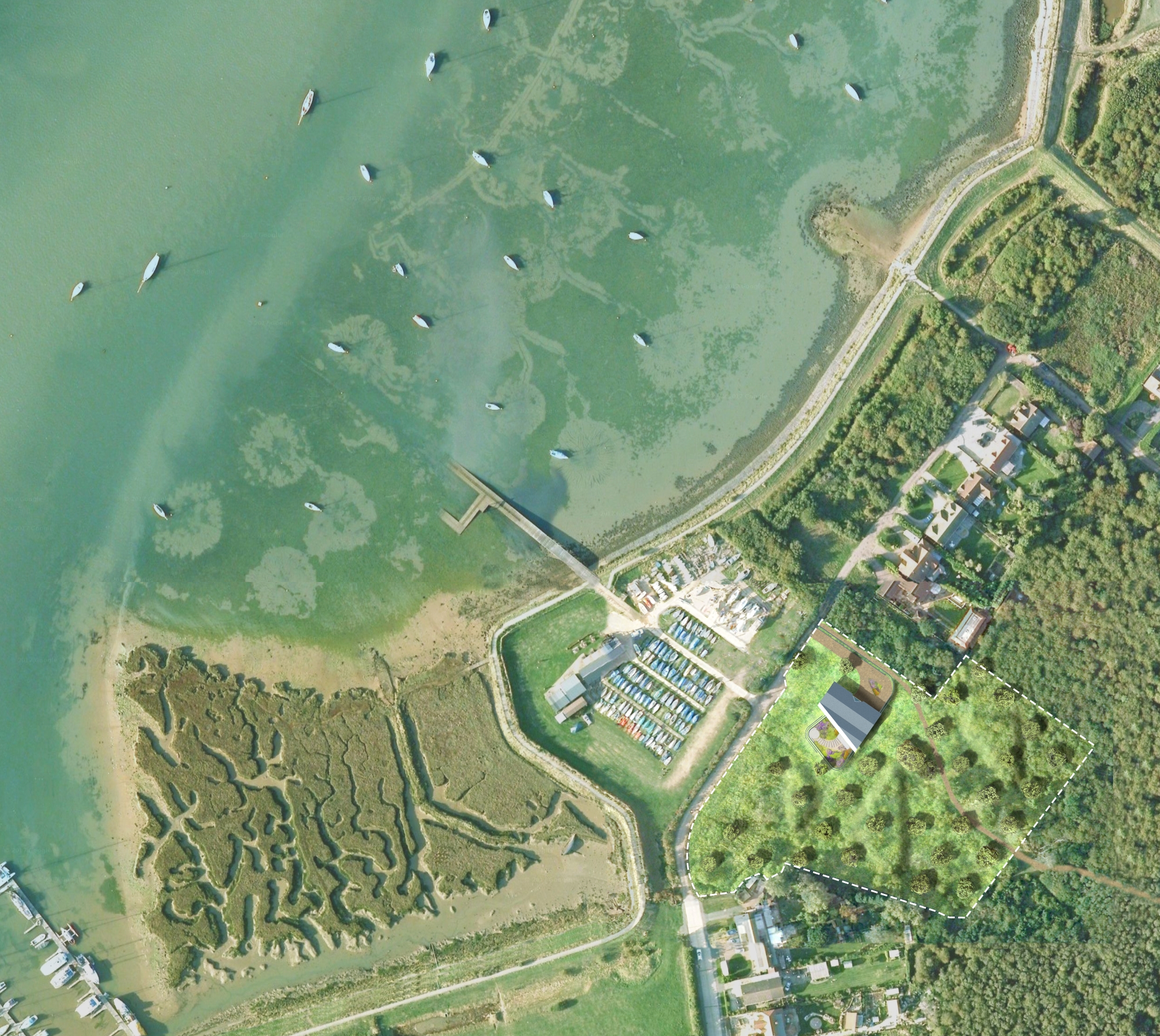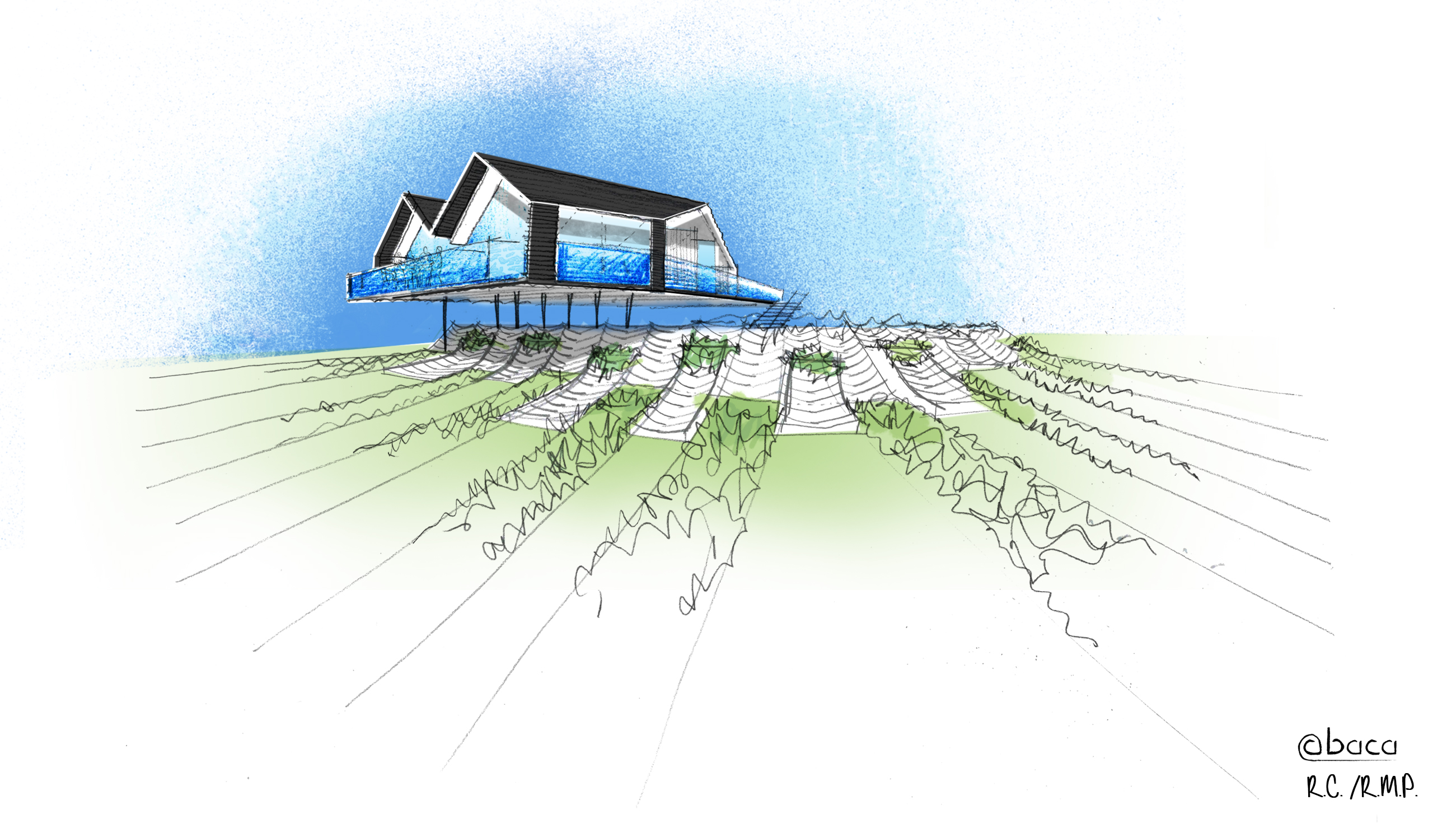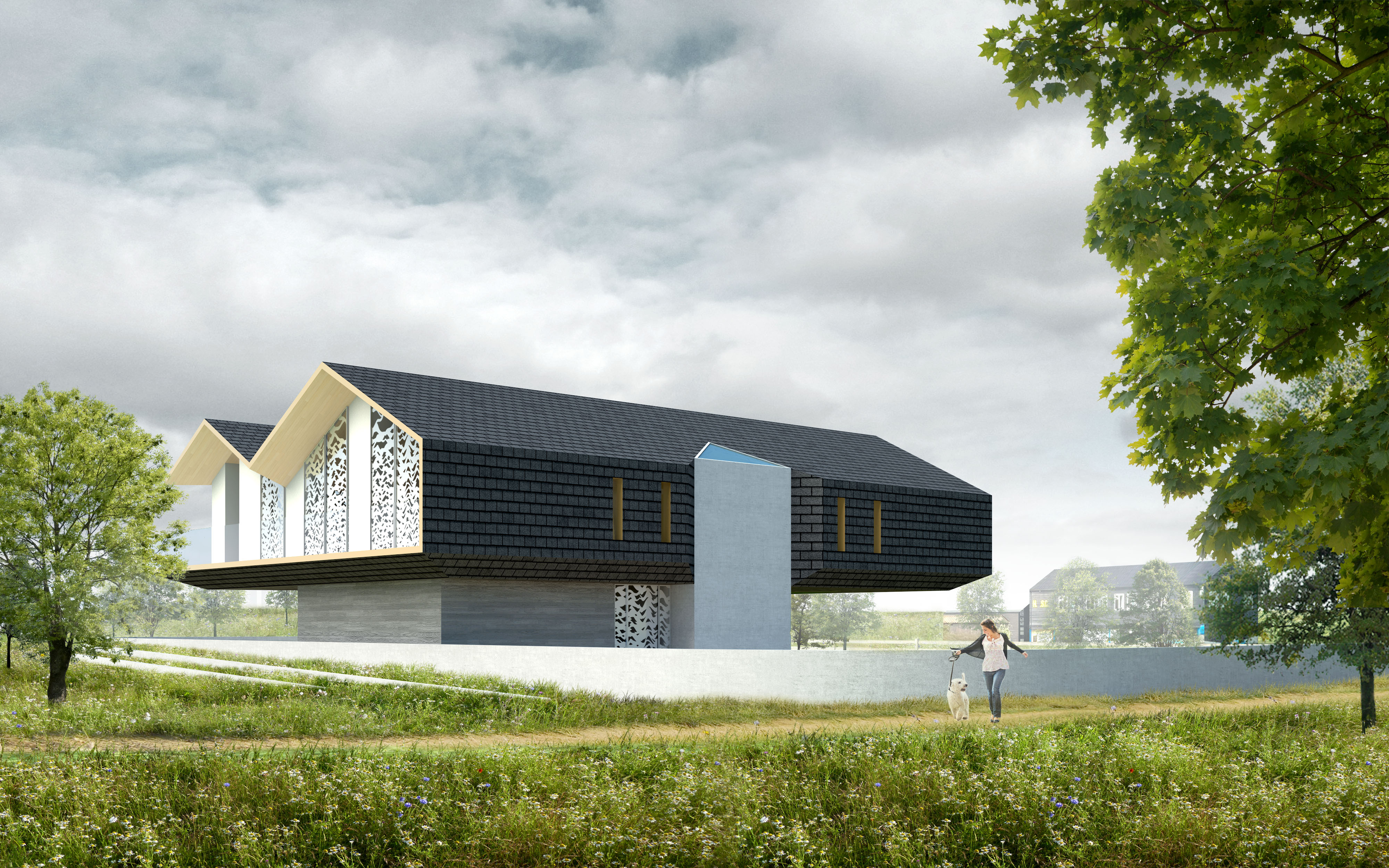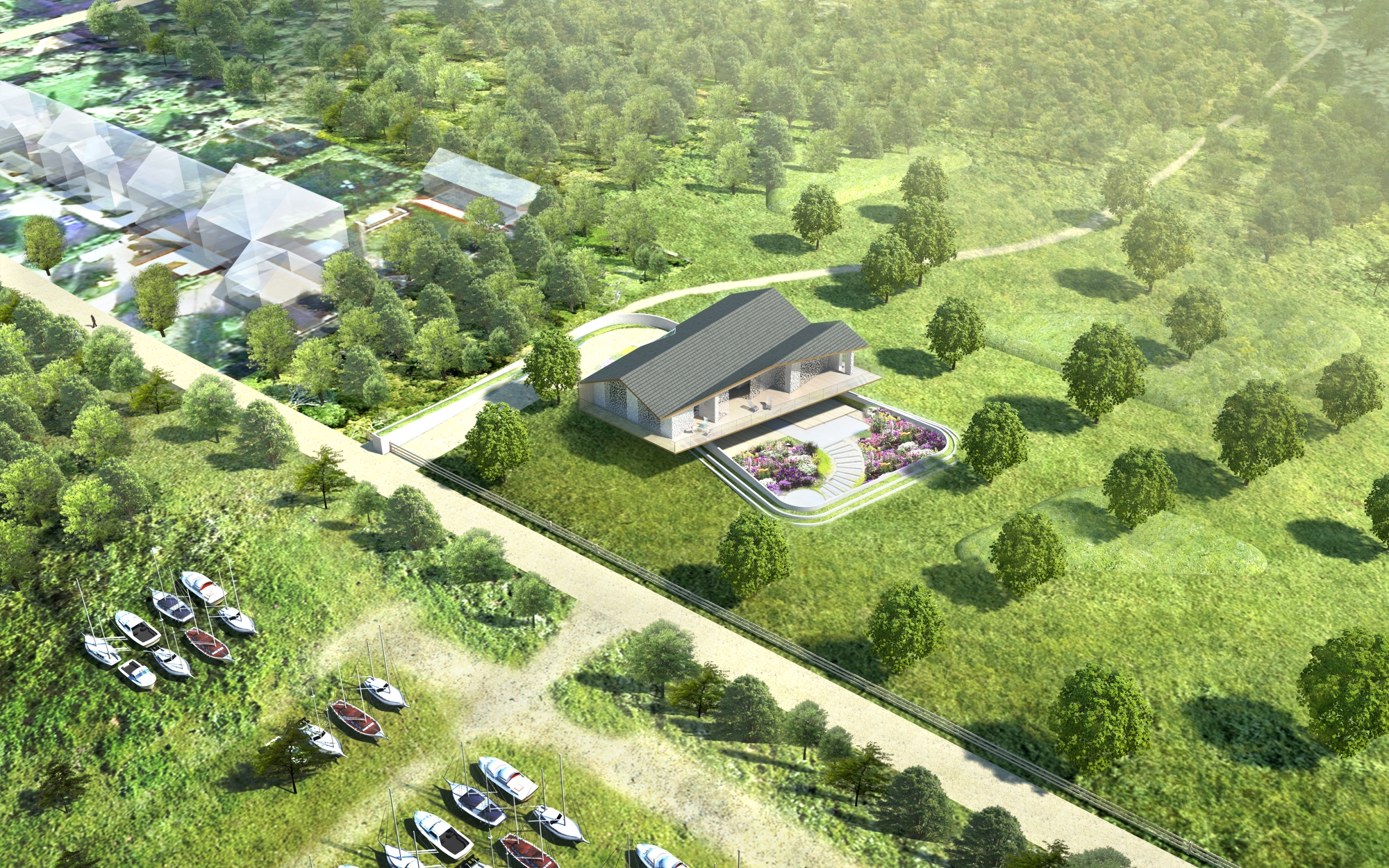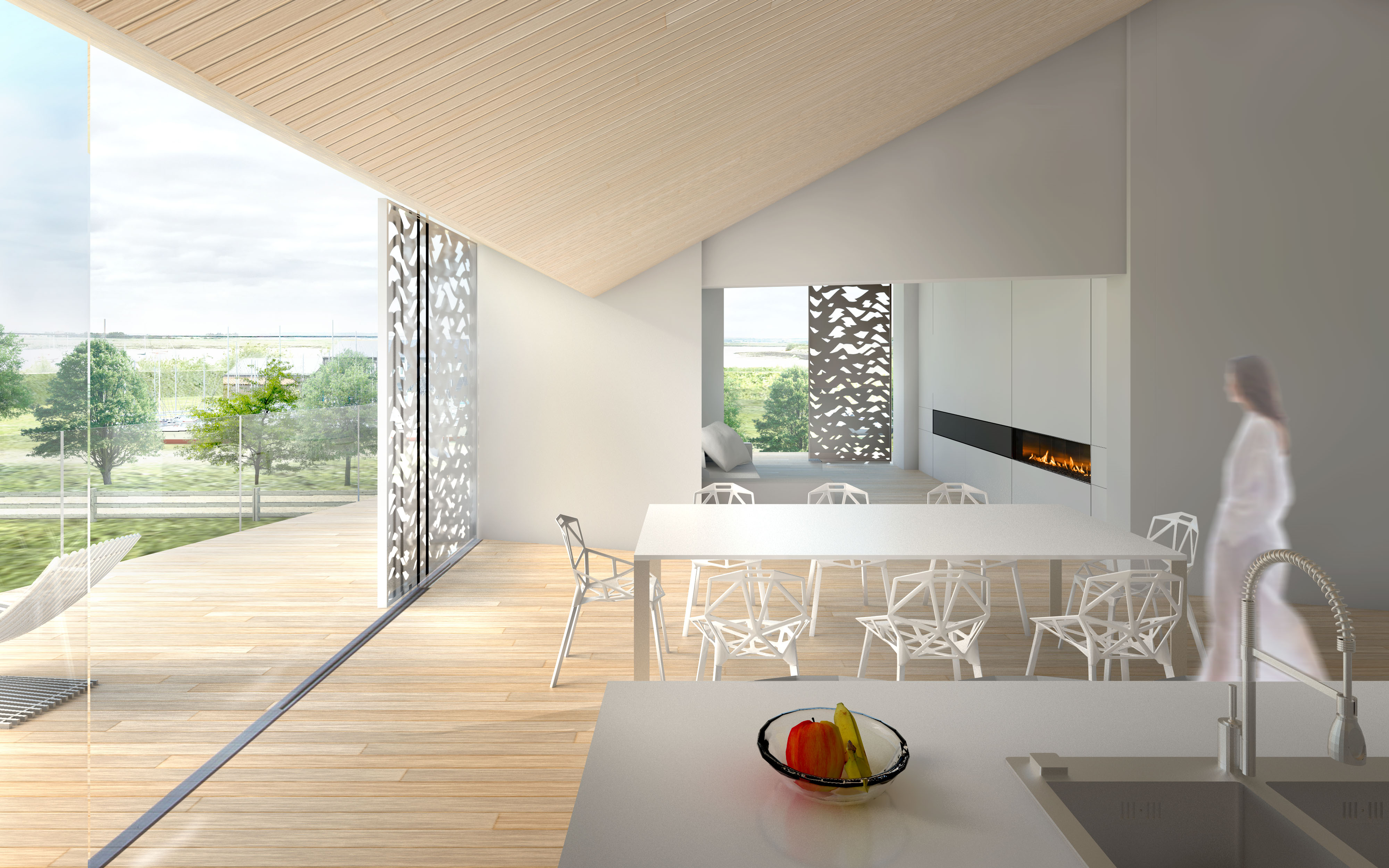Process
The design process began with an in-depth site analysis,mapping the floodplain, assessing historical flood data, and projecting future risk. Recognising that this location is vulnerable to increasingly severe flood events due to climate change, the team aligned their strategy with property flood resilience (PFR) principles.
We adopted an integrated design approach, coordinating architecture, landscape, civil engineering, and environmental strategy, echoing frameworks discussed in academic research on flood resilience. One of the key moves was to elevate the primary floor above the 1-in-1000-year flood level, exceeding Environment Agency minimum requirements. At the same time, lower areas, such as garages, the garden, and vehicle storage, are designed to flood safely and drain, ensuring minimal damage and rapid recovery.
To blend sustainability with resilience, the process also integrated renewable energy: south-facing pitched roofs accommodate photovoltaic panels or solar thermal systems; a ground-source heat pump is provisioned for; and glazing is arranged to facilitate natural cross-ventilation, reducing reliance on mechanical cooling. The design includes generous overhangs to balance solar gain across seasons.
The garden acts not just as a living space but as a flood-mitigation buffer: earth-terraced areas and planted berms absorb and channel water, while retaining walls both protect access and prevent vehicles from drifting in a flood event.
